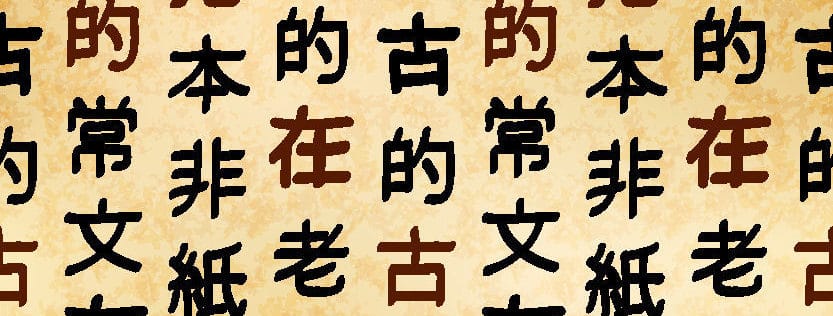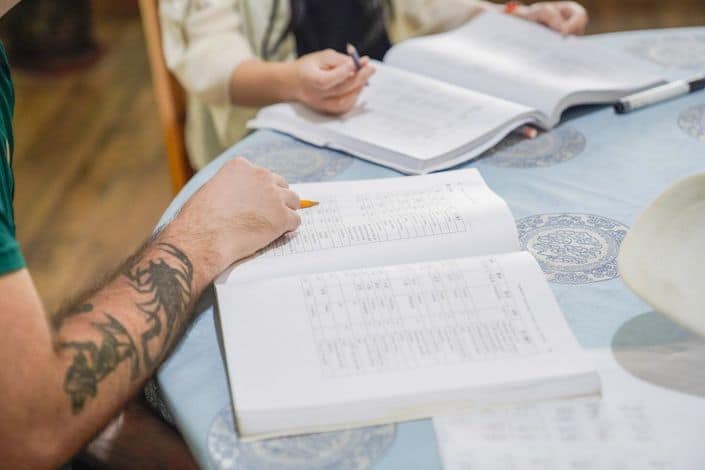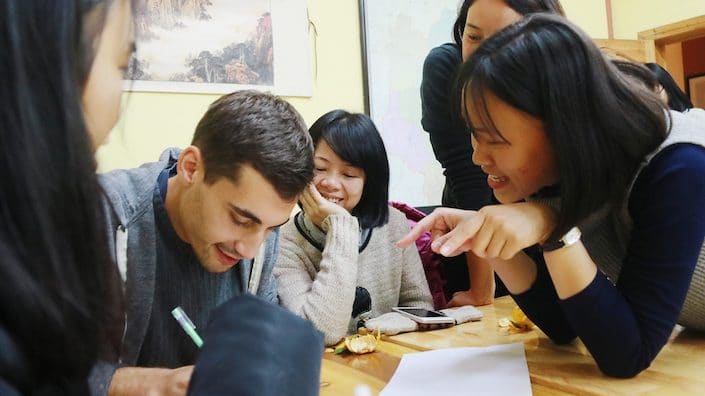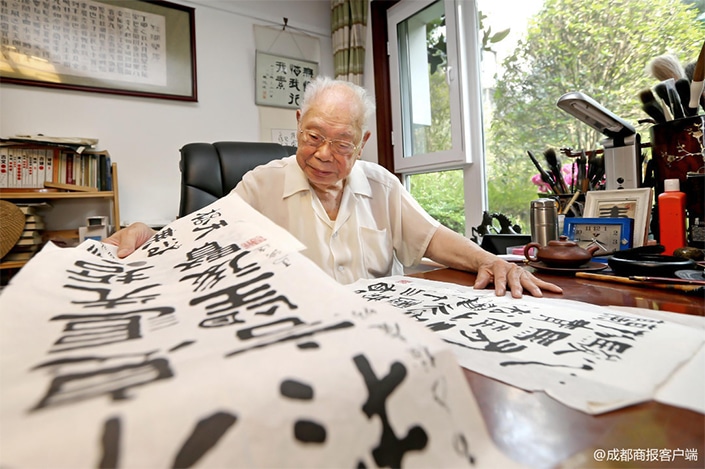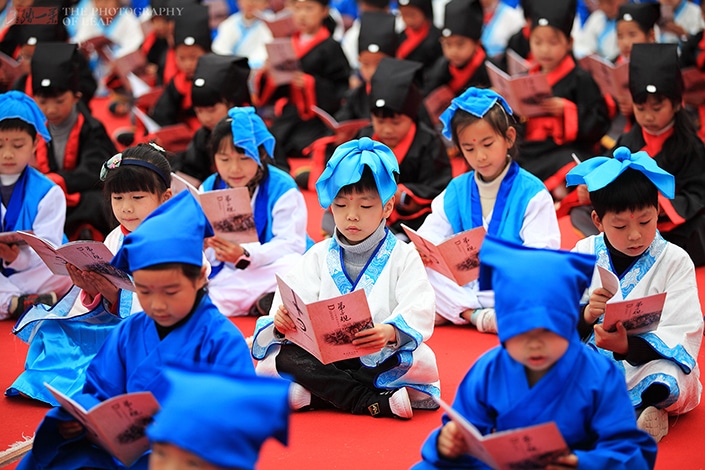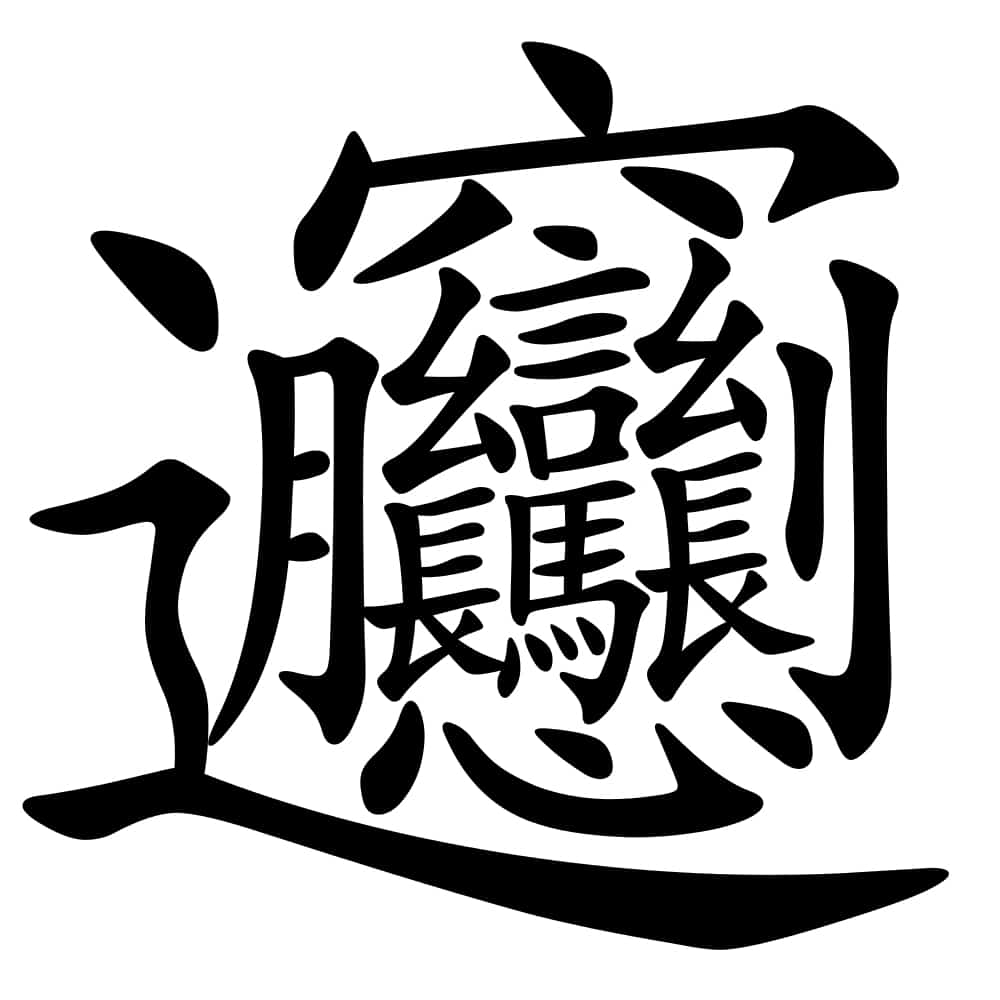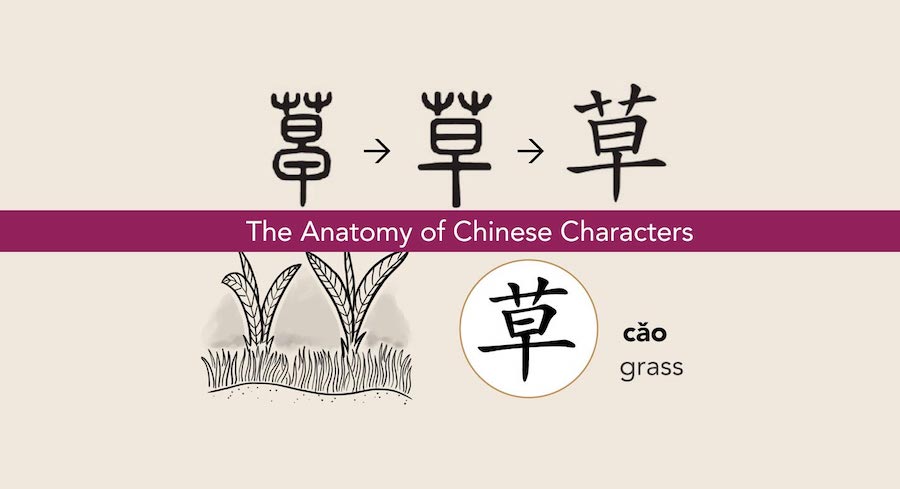The Six Types of Chinese Characters
Learn Chinese in China or on Zoom and gain fluency in Chinese!
Join CLI and learn Chinese with your personal team of Mandarin teachers online or in person at the CLI Center in Guilin, China.
At first glance, Chinese characters can seem like a bunch of random and confusing symbols. But did you know there are actually six distinct types of Chinese characters which are formed and used according to a meticulous set of rules and methods? Read on to find out more.
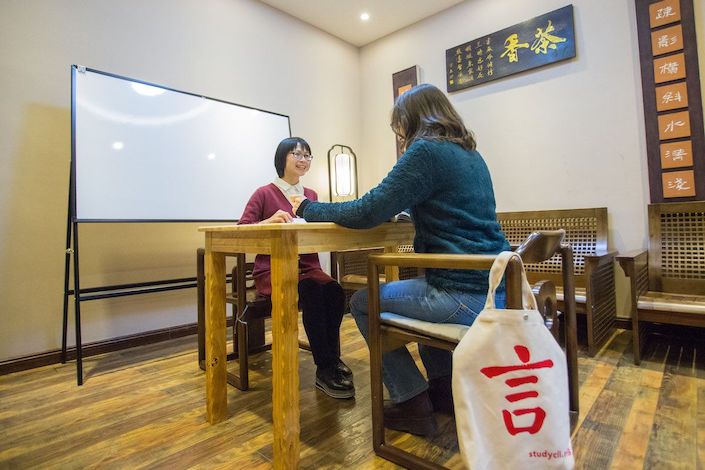
Table of Contents
What are Chinese characters?
Chinese characters are logograms. This means that, instead of being written using the letters of an alphabet, logograms consist of characters or “pictures” that represent a word. Egyptian hieroglyphics are a good example of this.
Nowadays, the majority of the world’s languages have an alphabet system that’s used to write words. Chinese and other each Asian languages which make use of Chinese characters, such as Japanese and Korean, are the main languages that use logograms today.
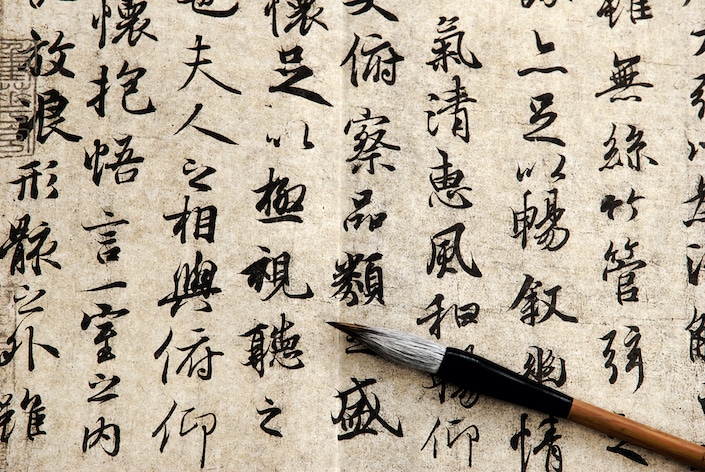
Chinese characters can seem mysterious to the uninitiated.
Are all Chinese characters pictograms?
There is a widespread misconception that all Chinese characters are pictograms (also called "pictographs"), meaning that all characters look like the word or meaning that they are used to represent.
It’s common to see characters such as 木 (mù; wood or “tree”) and 山 (shān; mountain) used as examples to show the “easy” nature of Chinese character composition. This understanding of the language is sometimes used as a way to “sell” Chinese to new learners.
Introducing Chinese characters to beginners simply as pictograms is misleading, however. Although pictograms are fun and beginner-friendly, they only make up about 4% of all Chinese characters. In actuality, the formation of characters is incredibly complex. Pictograms represent just one relatively minor type of character out of a total of six different types.
Categorizing Chinese characters: Six types
Chinese characters are split into six different categories referred to as 六书 (liùshū). The concept of 六书 (liùshū) was first created by scholars during the Han dynasty based on the composition and usage of individual characters.
Type 1: Pictograms 象形字 (xiàngxíngzì)
象形 (xiàngxíng) characters are pictograms. This method of forming Chinese characters is the easiest and most comprehensible form for beginners to learn. The characters are descriptive in nature and look like the object or phenomenon they represent.
Common pictographic characters are:
- 日 (rì; sun)
- 雨 (yǔ; rain)
- 火 (huǒ; fire)
- 口 (kǒu; mouth)
As you can see, these 象形 (xiàngxíng) characters all kind of look like the concepts they represent, but as previously mentioned, they only make up about 4% of all Chinese characters.
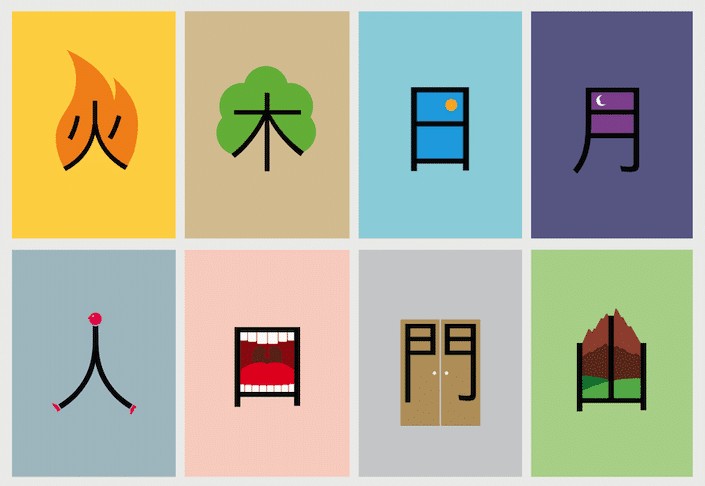
As this graphic by Chineasy makes clear, thinking about the objects pictographic characters represent makes them easier to learn.
Type 2: Phono-semantic characters 形声字 (xíngshēngzì)
形声 (xíngshēng) literally means to “form sound.” Over 80% of all Chinese characters are said to fall into the 形声 (xíngshēng) category.
Thus the vast majority of Chinese characters are phono-semantic compound characters. Phono-semantic simply means that generally both the pronunciation and the meaning of these types of characters can be inferred just by looking at them.
Native speakers are of course aware of the existence of phonetic components hidden within Chinese characters. When they come across a hitherto unseen character, they typically follow the rule of thumb (有边读边, yǒu biān dú biān), which translates to “if it has a side, read the side.” This is because the phonetic components of a character can usually be found on one of its sides.
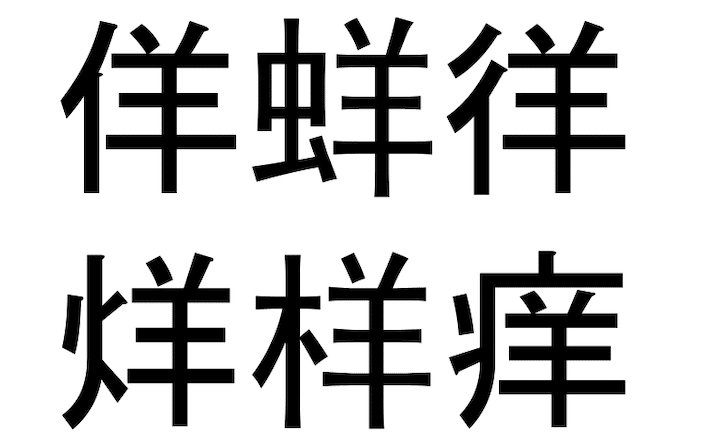
In each of these characters, the phonetic component “yang” can be found on the right.
In general, the sound component of a character appears on the right, while the semantic component is on the left. However, characters can also have the phonetic component on the top while the semantic component is on the bottom. At other times, the phonetic component may appear on the inside of the character while the semantic component is on the outside or vice versa.
The semantic part which gives the meaning is usually a radical, so this is why it is important to learn your radicals! The more radicals you know, the easier it will be to guess the meaning of the character.
Knowing your radicals also makes it easier to guess a character’s pronunciation because cutting out the radical allows you to easily identify the phonetic component that remains.
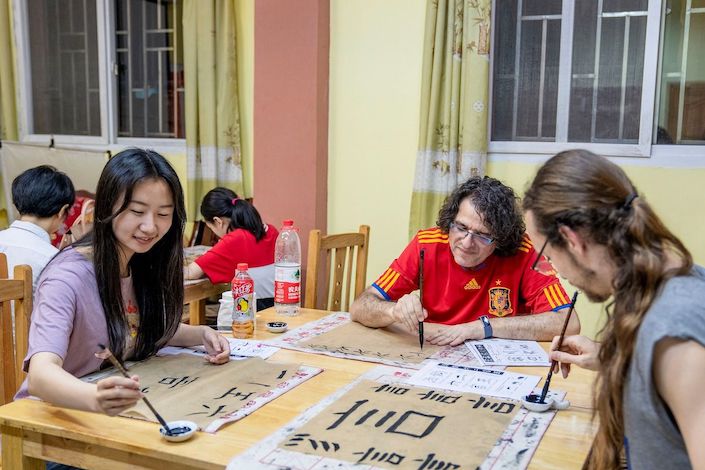
Knowing common phonetic components and radicals can make it easier to guess both the meaning and pronunciation of Chinese characters.
Characters with the same phonetic component
To get an idea of how phonetic components can influence the pronunciation of individual characters, it’s helpful to look at a few examples.
The following characters all contain the phonetic compound 登 (dēng; to ascend, to put on). Notice how the phonetic compound influences their pronunciation while their semantic radicals provide clues to their actual meaning:
- 蹬 (dēng; to step on) = 足 (zú; foot) + 登 (dēng)
- 瞪 (dèng; to stare) = 目 (mù; eye) + 登 (dēng)
- 僜 (dèng; Deng ethnic minority of Tibet = 亻(rén; radical for person) + 登 (dēng)
- 澄 (dèng; to settle, to become clear) = 氵(shuǐ; radical for water) + 登 (dēng)
- 噔 (dēng; thump *onomatopoeia) = 口 (kǒu; mouth) + 登 (dēng)
- 嶝 (dèng; mountain path) = 山 (shān; mountain) + 登 (dēng)
Below is another good example showing two characters that both contain the phonetic compound 反 (fǎn; contrary, in reverse):
- 饭 (fàn; rice) = 饣(shí; food radical) + 反 (fǎn)
- 返 (fǎn; to return to) = 辶 (chuò; walking radical) + 反 (fǎn)
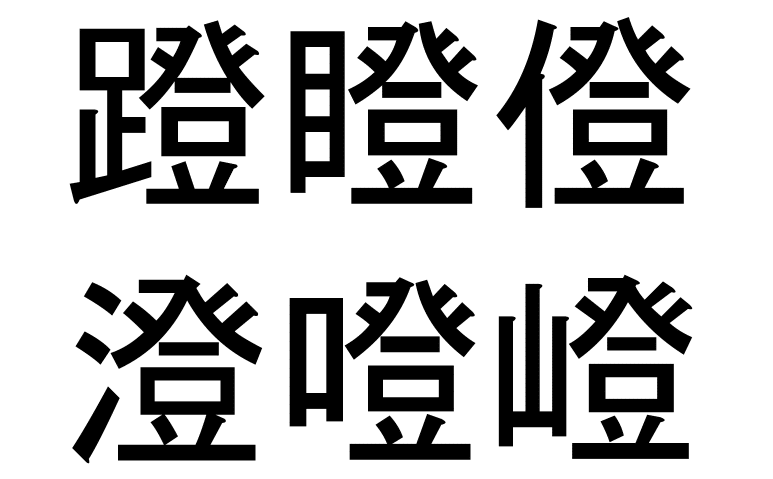
Each character in this group shares the phonetic component “deng.”
Test your skills: 扳
Based on what we have learned so far, can you guess the meaning and pronunciation of the character 扳?
If you are familiar with Chinese radicals, you would have realized that 扳 contains the hand radical (扌, which is the radical form of 手; shǒu). This means that this character is a word that is probably related to the use of hands.
We also know that the character's sound component is usually derived from the part on the right. In this case, the part on the right is 反 (fǎn), so the whole character is probably pronounced “fan,” or something similar.
Well, 扳 is actually pronounced as bān and it means to pull or to turn (sth) around / to turn around (a situation). Obviously this involves the use of hands so our radical guessing was correct! But what happened to the initial sound?

At CLI, some students focus on learning Chinese characters while others focus on the spoken language. Regardless, knowing the six types of Chinese characters helps pave the way for greater Chinese language fluency.
This brings us to another important consideration...
Sound changes in Chinese
As you have seen from the example above, using the phonetic component of a character to guess its pronunciation is not always a 100% foolproof method. This is because throughout their history, characters and their pronunciations have evolved. As a result, some characters sound completely different from how you would expect them to!
Sometimes, characters that share the same phonetic compound may still be pronounced differently. Although they may not all sound the same, it is sometimes still possible to identify a pattern that can help you make some educated guesses about how characters that share the same phonetic component should be pronounced.
The following list of characters containing the phonetic component 周 (zhōu) show how dramatic (but still somewhat systematic) these changes can be. These character’s phonetic component 周 (zhōu) ends in the vowel cluster “ou,” but only one of the related characters highlighted in the chart below shares this ending. All of the others end in some variation of the vowel cluster “iao.”
Noticing patterns like this can make guessing an unfamiliar character easier.
| Semantic component | + 周 (zhōu) phonetic component |
|---|---|
| 丝 (sī; silk) | 绸 (chóu; silk) |
| 讠(yán; speech) | 调 (tiáo; to adjust) |
| 讠(yán; speech) | 调 (diào; to tune, or to move) |
| 鱼 (yú; fish) | 鲷 (diāo; porgy fish) |
| 隹 (zhuī; bird) | 雕 (diāo; to engrave, or a bird of prey) |
Type 3: Simple ideograms 指事字 (zhǐshìzì)
指事 (zhǐshì) can literally be translated as ‘pointing to matters.’ Characters that fall into this category are ideogramic characters. As their name suggests, they express an abstract idea in an iconic form, and are often regarded as “self explanatory characters.”
The characters 上 (shàng; up) and 下 (xià; down) are good examples of the self-explanatory nature of characters of this type.
If the straight horizontal line present in both characters represents the ground, it is easy to see how one conveys the idea of “up” by having the horizontal line act as the base while the vertical part of the character points up. The “down” character is simply a version of the “up” character that’s been flipped upside-down, causing the vertical part to point down.
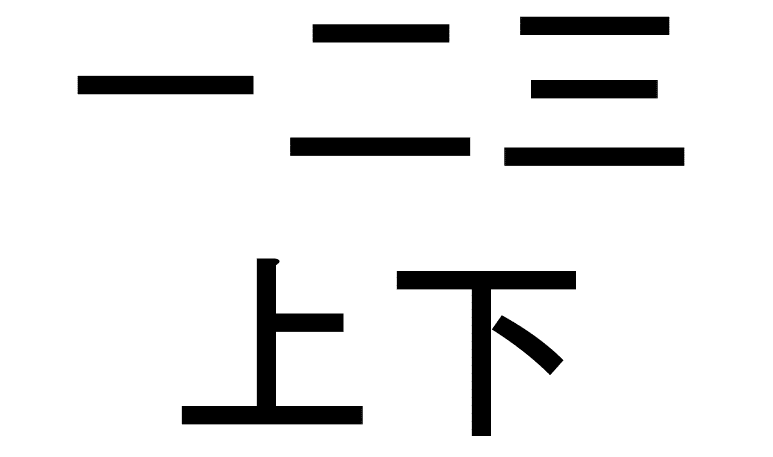
The meanings of characters in the simple ideogram category are generally quite self-explanatory.
Type 4: Compound ideograms 会意字 (huìyìzì)
会意 (huìyì) characters are also quite self-explanatory. Usually, they are created by the combination of two or more pictograms or ideograms but they are more abstract.
会意 characters “remedy” the limitations of using pictograms or simple ideograms to create characters. 会意 characters have a comparative advantage in that they can better express abstract meanings and provide a more robust method of creating new characters.
For example, the pictographic character 木 (mù; wood) can be combined combined with the radical 亻(rén; person radical) to create 休 (xiū; to rest). Think of a person resting under the shade of a tree!

The compound ideogram character for “rest” (休 xiū), is composed of the character for wood and a radical that means “person.”
Here are some other interesting compound ideograms:
- 看 (kàn; to look) is a combination of 手 (shǒu; hand) and 目 (mù; eye)
- 烦 (fán; to trouble, to to feel vexed) combines 火 (huǒ; fire) and the radical 页 (yè; page, leaf). It’s easy to see how a pile of burning pages could be stressful!
Type 5: Transfer characters 转注字 (zhuǎnzhùzì)
转注字 (zhuǎnzhùzì) are characters with meanings influenced by other words. They are sometimes referred to as “mutually explanatory” characters.
In Chinese linguistics, transfer characters appear in three different styles: transference of character form (形转; xíngzhuǎn), transference of character meaning (义转; yìzhuǎn), and transference of sound (音转; yīnzhuǎn).
The characters 考 (kǎo; to test) and 老 (lǎo; old) are considered 转注 (zhuǎnzhù) characters because they were previously interchangeable, but over time they started to represent different things and their meanings drifted apart.
窍 (qiào; hole) and 空 (kōng; emptiness) represent another example of a pair of characters that historically were semantically interchangeable, but now hold different meanings.
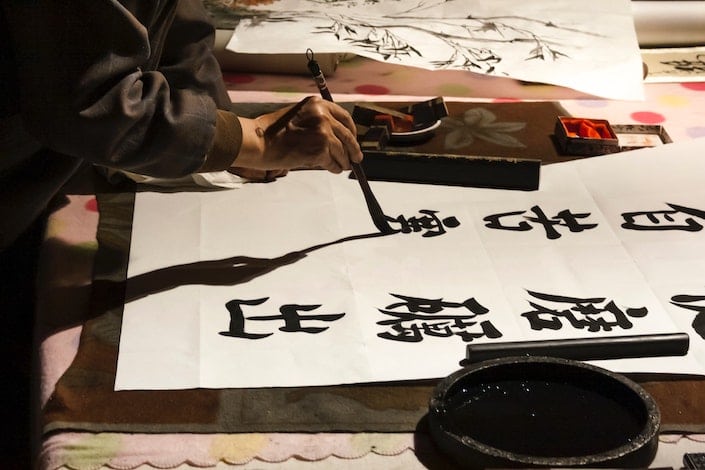
The original meanings of most transfer characters have evolved over time.
Type 6: Loan characters 假借字 (jiǎjièzì)
假借字 (jiǎjièzì) are 'borrowed” or “loan” characters. This term refers to a set of characters that were used to create other characters that sound the same or similar. In linguistics, these are referred to as homophonous or near-homophonous morphemes.
Although these phonetic borrowings created new characters, sometimes the original character’s meaning was completely discarded and a new character was created to convey its meaning.
For example, the character 乎 (hū) originally meant “to call out” but it was also used as a grammatical particle in classical Chinese to express a question. Eventually, a new character 呼 (hū) was created to write the verb “to call out” by “borrowing” the sound of 乎 and adding a mouth radical.
Another example of characters of this type is 必 (bì; must), which originally meant “weapon handle.” Since the pronunciation of 必 was similar to the word “must,” the character 必 began to be used to represent the word “must.” To help differentiate the two, a new character 柲 (bì) was eventually created to convey the meaning of a “weapon handle.”
The common character 来 (lái) has a similar history. Originally, 来 meant “wheat,” but this meaning was gradually replaced and 来 began to be used as a verb meaning “to arrive.” As a result, a new character, 麦 (mài), was assigned to represent “wheat.” Notice the change in the initial sound, which went from “l” in 来 (lái) to “m” in 麦 (mài).
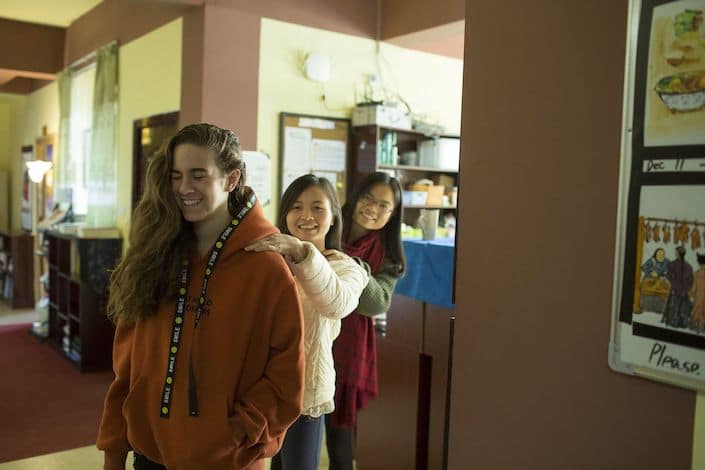
The origin stories of loan characters provide fascinating insights into the evolution of the Chinese language.
Why learn the different character types?
It should now be quite evident that Chinese characters are more than just a set of random pictures or symbols.
Now that you are aware of the six different character types, you will be able to recognize and memorize characters much more easily.
In many cases, understanding the relationship between radicals and phonetic compounds will also help you guess both the meaning and the pronunciation of previously unseen characters.
Having this background knowledge will assist you on your learning journey and will deepen your understanding of the rich history of the Chinese language.
Chinese characters are profound. When closely analyzed, it’s possible to experience their true beauty and depth.
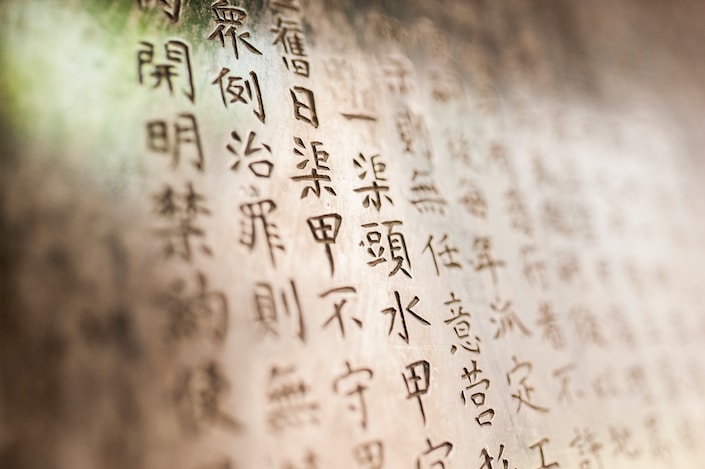
Knowing the six different types of Chinese characters makes it easier to master the Chinese language.
Chinese character types vocabulary
| Chinese | Pinyin | English |
|---|---|---|
| 六书 | liùshū | The Six Methods (six categories of Chinese characters) |
| 造字方法 | zàozì fāngfǎ | method of creating Chinese characters |
| 象形 | xiàngxíng | pictograms |
| 形声 | xíngshēng | phono-semantic |
| 指事 | zhǐshì | simple ideograms |
| 会意 | huìyì | compound ideograms |
| 转注 | zhuǎnzhù | transfer characters |
| 假借 | jiǎjiè | loan characters |
| 有边读边 | yǒu biān dú biān | "if it has a side, read the side” |
| 读音 | dúyīn | pronunciation of a Chinese character |
| 声旁 | shēngpáng | phonetic component of a Chinese character |
| 形旁 | xíngpáng | semantic component of a Chinese character |
| 偏旁 | piānpáng | component of a Chinese character |
| 部首 | bùshǒu | Chinese radical |
| 音变 | yīnbiàn | phonetic change |




